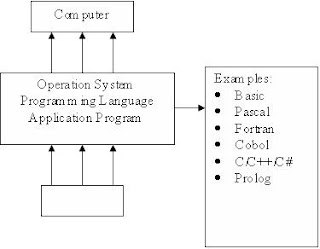Hardware:
Software: --------->
Brainware:
Saturday, August 28, 2010
Thursday, August 19, 2010
Control Principle
Control of the process in the plant is an essential part of the plant operation. There must be enough water in the boilers to act as a heat sink for the reactor but there must not be water flowing out the top of the boilers towards the turbine. The level of the boiler must be kept within a certain range. The heat transport pressure is another critical parameter that must be controlled. If it is too high the system will burst, if it is too low the water will boil. Either condition impairs the ability of the heat transport system to cool the fuel.
In this section we will look at the very basics of control. We will examine the fundamental control building blocks of proportional, integral and differential and their application to some simple system.
Basic Control Principle
Consider a typical process control system. For a particular example let us look at an open tank, which supplies a process, say a pump, at its output. The tank will require a supply to maintain its level (and therefore the pump’s positive suction head) at a fixed predetermined point. This predetermined level is referred to as the setpoint (SP) and it is also the controlled quantity of the system.
Clearly whilst the inflow and outflow are in mass balance, the level will remain constant. Any different in the relative flows will cause the level to vary. How can we effectively control this system to a constant level? We must first identify our variables. Obviously there could be a number of variables in any system, the two in which we are most interested are:
- The controlled variable: in our example this will be level.
- The manipulated variable: the inflow and outflow from the system.
If we look more closely to the figure sample, assuming the level is at the setpoint, the inflow to the system and outflow are balanced, obviously no control action is required whilst this status quo exist. Control action is only necessary when a difference or error exists between the setpoint and the measured level. Depending on whether this error is a positive or negative quantity, the appropriate control correction will be made in an attempt to restore the process to the setpoint.
Henceforth, the error will always take the form of; Error = Setpoint – Measured Quantity or e = SP - M
The control action will be either to vary the inflow or outflow from the system in order to keep the level at the setpoint. Let us consider the general format for achieving this objective.
Subscribe to:
Comments (Atom)

